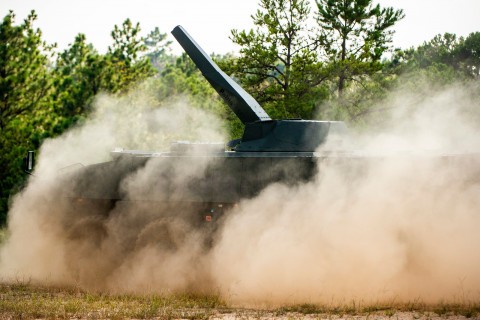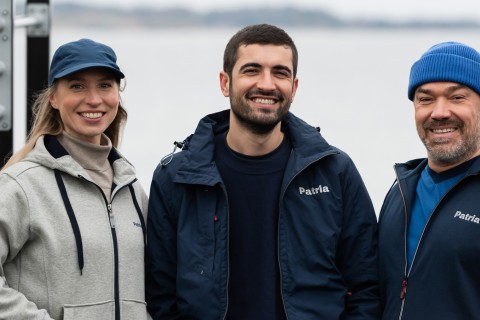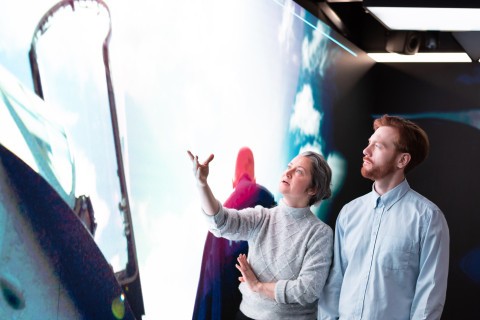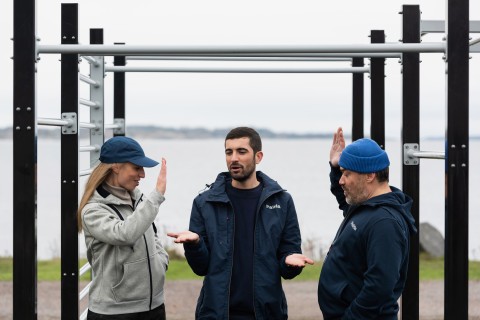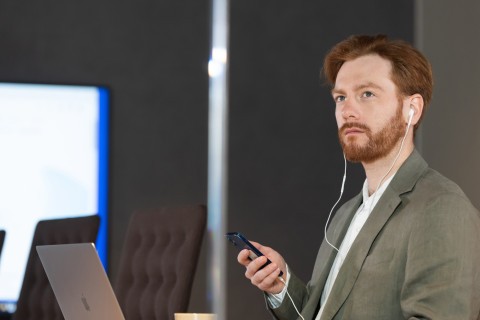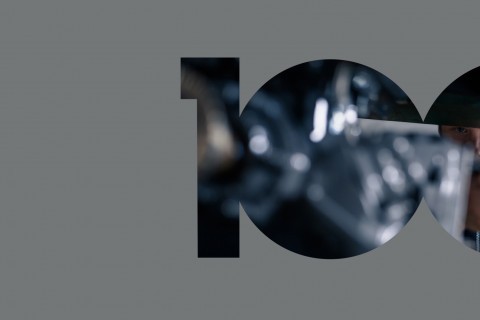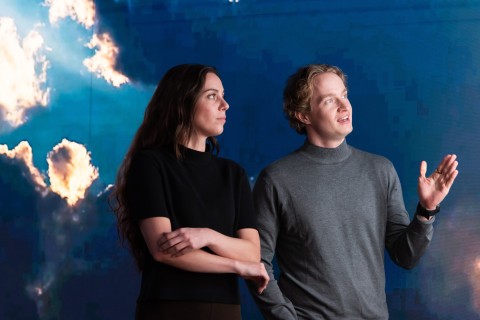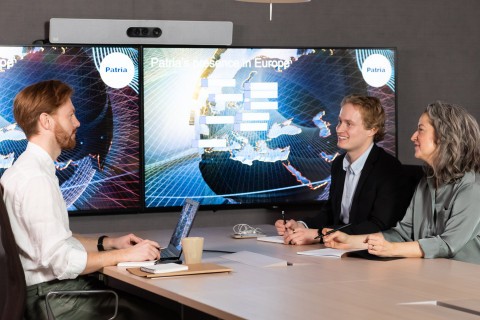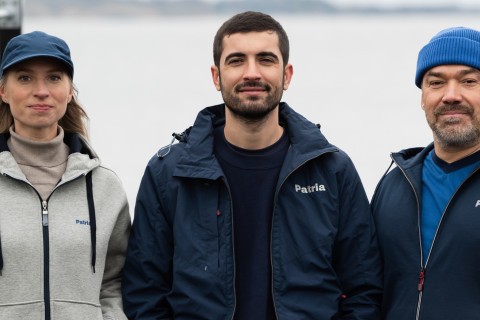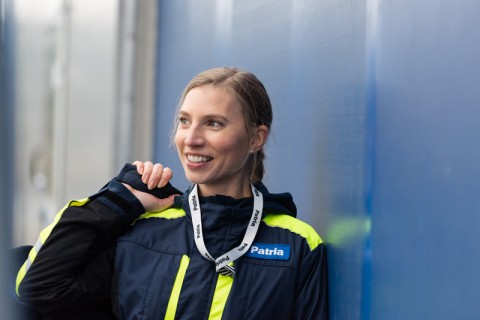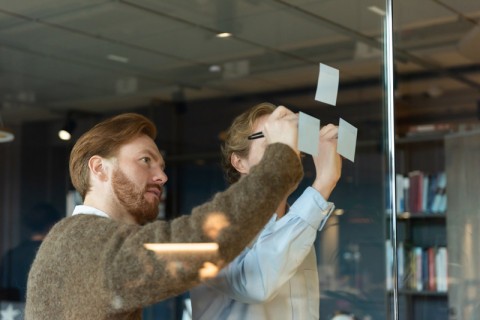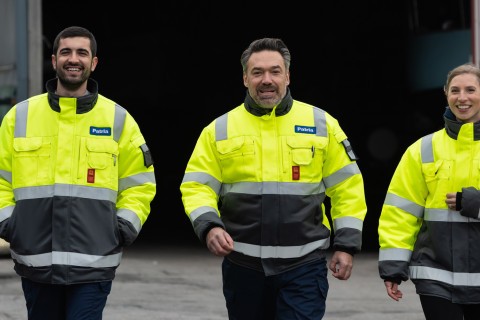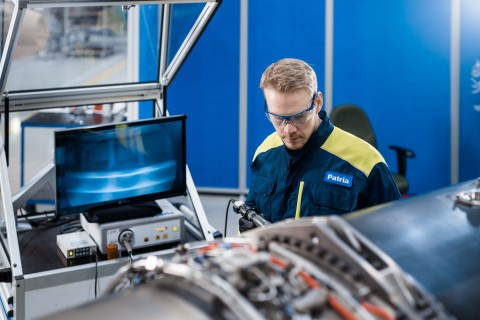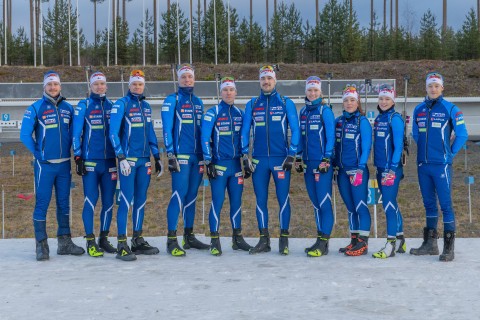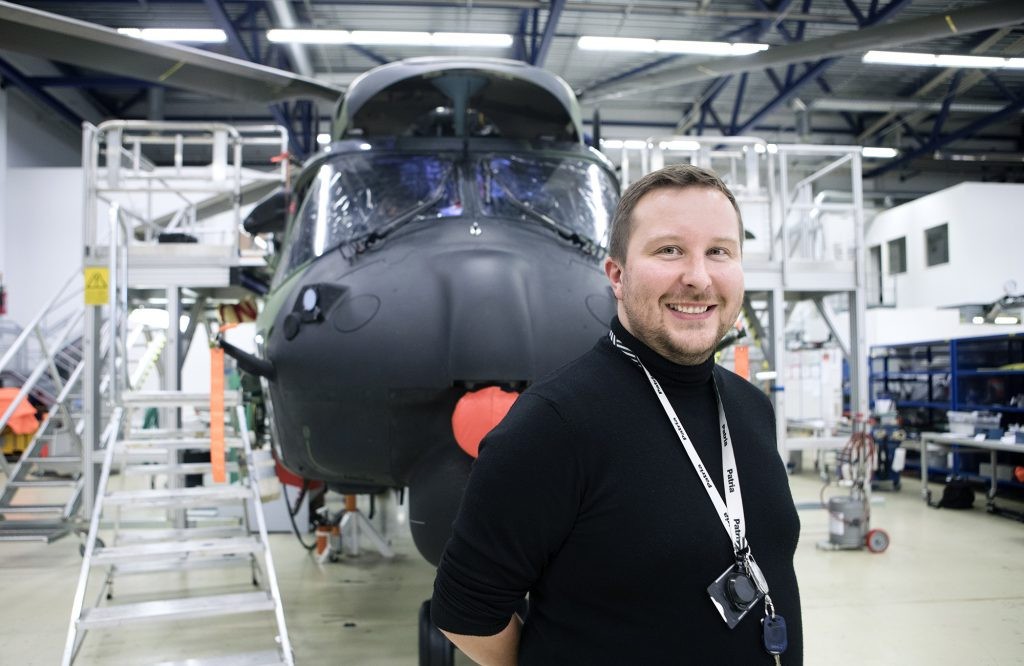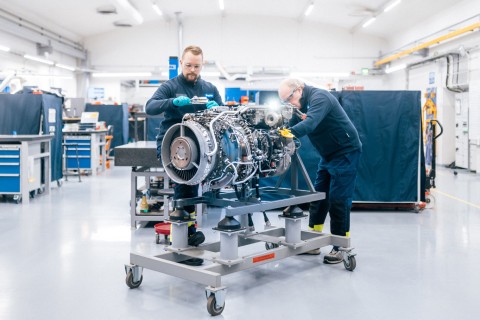
24.10.2019
During its retrofit modernisations of NH90 transport helicopters, Patria updated 15 Finnish Army helicopters to the latest FOC configuration.
During their years working in Halli, helicopters have become more than familiar to Antti-Tapani Pekkala and Elias Immonen. Retrofit gave them a unique experience and understanding of these aircraft.
As a system tester, Pekkala’s task during the retrofit modernisations was the same as in other maintenance jobs: to test that the mechanics had successfully made the changes. He says that the most challenging aspect of the retrofit modernisations was to internalise the necessary instructions.
“If you’re expected to jump into your overalls and get down to work, then reading instructions is definitely going to take the most time.They’re much clearer these days, but in the beginning they were quite impossible to read,” says Pekkala, who has been working at Patria for 15 years.
“Although I’ve see a lot of different aircraft, you always encounter new systems that are completely unfamiliar to you.It’s interesting to see how they work. On the other hand, a professional has to be able to easily digest a huge amount of information to get to grips with a new job. ”Pekkala estimates that, after becoming a system tester, it took him about a year before he began to notice faults by himself. “The amount of material you have to cram into your brain is unbelievable,” he says.
System tester Antti-Tapani Pekkala.
Dismantling, checking and testing
In brief, retrofit means this: a helicopter comes in, its condition is checked, and any defects are noted.The aircraft is then dismantled, and some of its equipment is sent away for modification. A single helicopter contains a huge number of components and devices that have been ordered from subcontractors, so service lead times largely depend on successful logistics.
At Patria’s Halli production facility in Jämsä, mechanics and testers go through the helicopters’ wiring and avionics canisters. A variety of modifications are also made to the fuselage to bring the aircraft up to the final FOC configuration standard.
A complete B test is then carried out on the ground to ensure that the newly installed devices and modifications are fully functional.
“During the airborne stage of the test, we make sure that the helicopter fulfils all of the requirements.It is then delivered to the end customer, and will return to service,” says production manager Olli Heinonen.
Production manager Olli Heinonen.
Learning more about this model
The practical work in the retrofit project is done by mechanics like Elias Immonen. Immonen has been working at Patria for seven years.For mechanics, retrofit means a diverse range of practical work.Immonen says it’s vital to be sharp at each stage of the operation.
“Particularly when there are new parts, it’s a good idea to check that they are in proper working order, as that will save a lot of bother later on.
Mechanics work alone to some extent, but there are also stages that require two or more mechanics to ensure high quality standards.”
Immonen says that common sense goes a long way in this job.
“You don’t try to turn a five-millimetre bolt with a two-metre anchor,” he says.
Immonen likes the diversity of his work, and the way that every day is a little bit different.It keeps him interested. Joining the retrofit project enabled Immonen to learn a great deal about this model of helicopter.
Pekkala adds that, though helicopters are superficially similar, they are all still individuals. Although the mechanics may have performed the exact same procedures on them, they may react slightly differently in tests. He feels privileged to have been able to work in a variety of different positions at Patria: for example, as a mechanic, as a B tester, and now as a system tester.
“It’s been great. I’m always encountering something new, and it’s entirely up to me how quickly I master it.”
Forward on the learning curve
Production Manager Heinonen says that just under a hundred people have worked on the Finnish Army’s NH90 retrofit project at Patria over the years. At its peak, they were working on no less than seven helicopters at once in Halli. The shortest time it took for one helicopter to go through the retrofit process was just over a year, compared to almost two years for the longest retrofit.
Logistically, the retrofit project was a huge puzzle, as components were sent away for modification, while at the same time, the correct amount of human resources had to be allocated to each stage of the modification process.
Heinonen says that although the process was pretty tough, Patria’s Aviation business unit had some previous experience of NH90 helicopter reconfiguration in 2003–2014. The employees involved in the retrofit project were required to have at least basic training in the aviation industry, a year-long induction period, and five years’ work experience.
“Some people have been working at Patria for a very long time. We have a few employees who’ve been with us right from the beginning and who are still involved in the project.”
The knowledge that has been acquired during this project will enable Patria to provide customers with even better service in the future.
“I’m really proud of how we’ve handled this. We have come a long way along the learning curve and have really developed along the way. And we now have truly profound expertise in helicopter maintenance.”
What did you like about the article?
Thank you for your opinion! You can share the article on social media using the buttons below:
